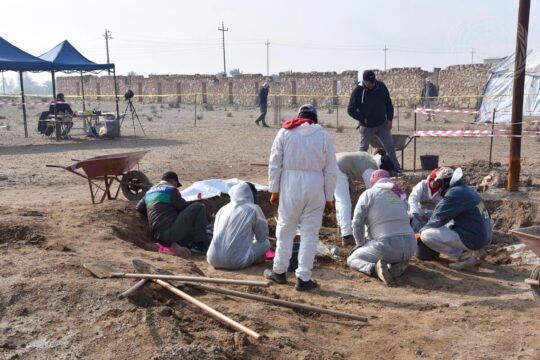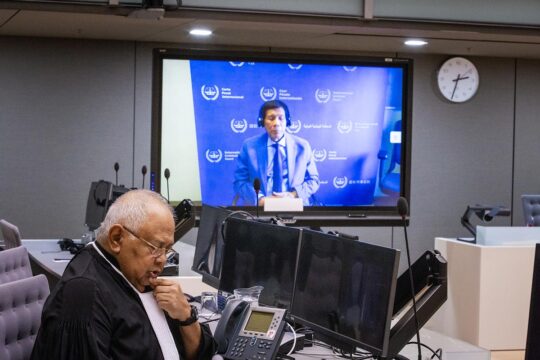Iraqi forces are fighting a muddy street battle against jihadists in southeastern Mosul, facing suicide bombers on the ground and a drone that can drop explosive charges from above.
Baghdad's forces have overwhelming firepower and numbers in Mosul, but the Islamic State group has a vast city in which to launch ambushes, plant bombs and try to make the battle as slow and costly as possible.
More than two months into the operation to retake the city, Iraqi forces have recaptured a large chunk of east Mosul, but IS still holds parts of it as well as all of its western side.
In southeastern Mosul, a small explosion sounds behind the front line, sending a member of Iraq's elite Rapid Response Division falling to the mud-covered ground, his legs wounded by shrapnel.
Security forces members train assault rifles and machineguns skyward, unleashing a barrage of fire at the small white drone that apparently dropped the explosive device.
IS jihadists "are flying an observation aircraft that carries a bomb or a grenade," Lieutenant Colonel Hisham Abdulkadhim, the commander of a regiment in the Rapid Response Division, explains.
"Where it see units, it drops it," Abdulkadhim says.
Members of the division swathe one of their wounded comrade's legs in bandages, then cut away the bloodied fatigues from the other, treating it as well.
The wounded man lies stoically on a black stretcher as they work, leaving behind a trail of blood when he is carried to an armoured Humvee vehicle for evacuation.
A white drone later returns, hovering far overhead.
"Don't gather together," warns a member of the federal police, which are fighting alongside Rapid Response Division.
The division has its own drone, which is periodically sent aloft to scout the path ahead.
On the ground, this is a far more dangerous threat: a suicide bomber driving an explosives-rigged vehicle is spotted heading toward Iraqi forces.
Members of the security forces sprint for cover behind a dirt barricade and a Humvee mounted with an anti-tank missile launcher prepares to fire.
"A car bomb tried to get close. We withdrew the units that were covering the front so that the Kornet (missile) system could deal with" it, Abdulkadhim says.
- Divide, clear, advance -
But the suicide bomber apparently pulls back, and the missile is not fired.
The berm behind which security forces took cover is part of a strategy of dividing and then clearing an area as they advance.
"We divide the area into squares," Abdulkadhim says.
They then clear houses, put in place snipers and weapons to deal with car bombs, and move on.
A bulldozer painted in a blue and grey camouflage pattern slowly moves through the thick mud that coats the street after recent rain, then scoops up pile after pile of dirt until the street is blocked, protecting forces behind it from suicide bombers prowling the city.
When the forces are finished clearing the area, the bulldozer forces a pathway through the berm, moves farther down the street, erects a new barrier, and the process is repeated.
This makes for slow going, but provides extra security.
Iraqi forces are backed by US-led air strikes and Iraqi aviation units, as well as artillery fire from the ground.
Throughout the day, massive rockets shriek over Mosul, sending clouds of dust rising in the distance when they explode.
Three of the rockets are mounted on the back of a truck in launch tubes that are raised to point them in the direction of their targets.
Security personnel fit fuzes to the tips of the rockets and wires to the other end to ignite them.
People clear the area around the truck, mobile phones come out to record, and the rocket is launched, disappearing over the rooftops trailing a tail of flame.
"Wherever there is a gathering of (IS) terrorist gangs, they give us information about them," says Jassem Abbas, who helped ready the rocket for launch.
Then "according to the coordinates, we bomb it.”



